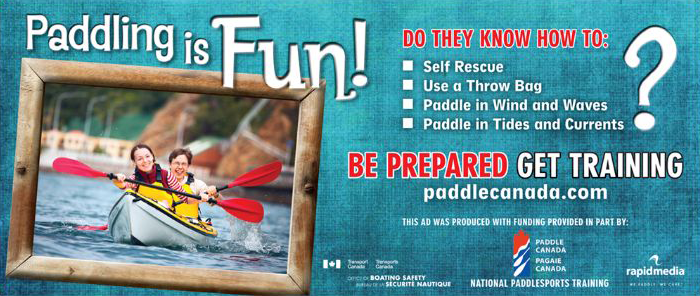Why talk about hypothermia?
Hypothermia is recognized as the first hazard encountered by kayakers
Hypothermia is a decrease in the core body temperature to a level at which normal muscular and cerebral functions are impaired.
Hypothermia is defined as a body core temperature less than 35 degrees Celsius. Decreased consciousness occurs when the core temperature falls to approximately 32 to 30 degrees.
So the idea is simply to make sure your body cannot cool down!
There are many excellent web sites about this subject (refer to the Resources Section), but most of them are interested about Mild or Severe hypothermia, referring to situations where the subject is already in need of hospitalization and cannot be rewarmed in the field.
I would like to concentrate on the first stage or Light Hypothermia because most victims that will die of hypothermia do so in temperatures between 0 and 10 degree Celsius. Prevention here is the key.
The danger with hypothermia is that it will cool you down gradually, and the mechanism won’t stop unless you do something about it.
As kayakers, we have no protection against wind and wet clothing. When on the water, we don’t have anything to hide behind, we can get fairly tired paddling against the wind, and fairly wet from the spray and rain.
Of course we have adapted clothing and the physical activity keeps us warm, and nobody dies from a little chill! Or do they?
I walk on the safe side. The first symptoms of hypothermia are cold and white extremities, shivering, and blue lips. With two of those symptoms present, the situation is not extreme, but if you do not take action it could be in the future.
The point is not that you are in danger at that stage, but that your situation will keep deteriorating if you do not take action
If you are a victim of hypothermia, it means that your body cannot rewarm itself in your present situation. All you need to do is stop the loss of heat by changing your environment. You just have to land, change into dry/warm clothing, eat some sugar and rehydrate yourself.
Physical activity, warm water (avoid alcohol and coffee), and dry clothing will stop the progression of hypothermia and get you back to normal.
We will discuss the subject some more during the course. The hidden danger about hypothermia for kayakers comes from delayed reactions and poor decision making at the end of a long day, eventually leading to preventable incidents. The obvious danger comes from immersion in cold water and a lack of preparation to deal with it.
Related Links
About the myth of Heat loss via the head: text extracted from The Wilderness Medicine Newsletter
“The cerebral blood flow is supplied via the carotid and vertebral arteries (4 in total) and is constant. The blood flow to the brain does not change as the demand for oxygen is constant. As a result, when you look at total heat loss, the head accounts for about 7% of the heat lost.
The cerebral blood flow does, however, vary based on cardiac output – the harder your heart beats, the greater the blood flow to the brain. And as you increase the blood flow to the brain, you also increase the percentage of heat loss. As it turns out, when you begin to exercise, there is increased cerebral blood flow. This increases the percentage of heat lost through the head to about 50% of total body heat loss. But as the person continues to exercise, the muscles demand more oxygen which increases blood flow. To ensure thermoregulation and maintain normal core temperature (exercises increases body heat), the skin vasodilates which increases blood flow to the skin to cool the blood. The net result is a decrease in the total blood flow to the brain and a decrease in percentage of total body heat lost through the head to about 10%. Once sweating begins, the percent lost through the scalp returns to 7%.”
Also a good source of medical info is the Merck which offers an extensive definition of hypothermia and its symptoms. Makes for good reading.

